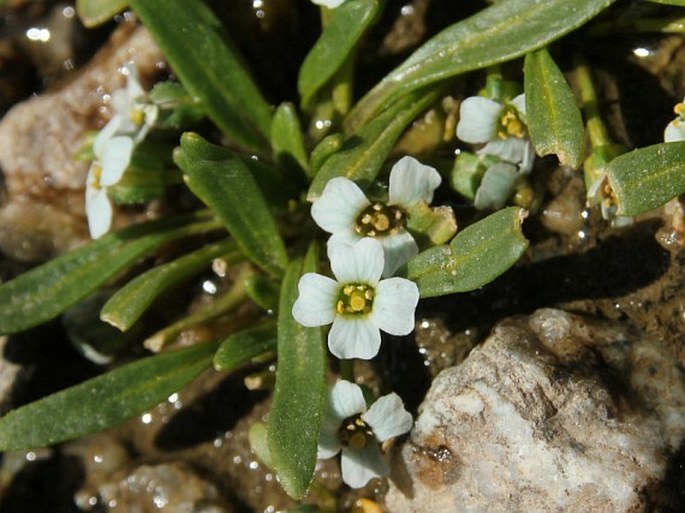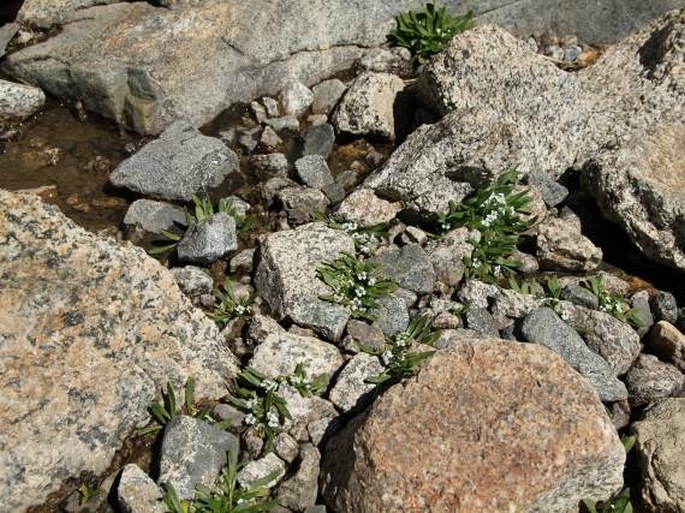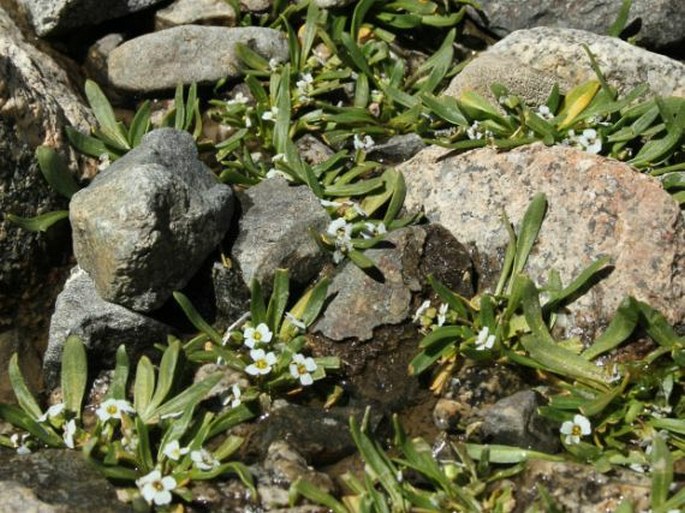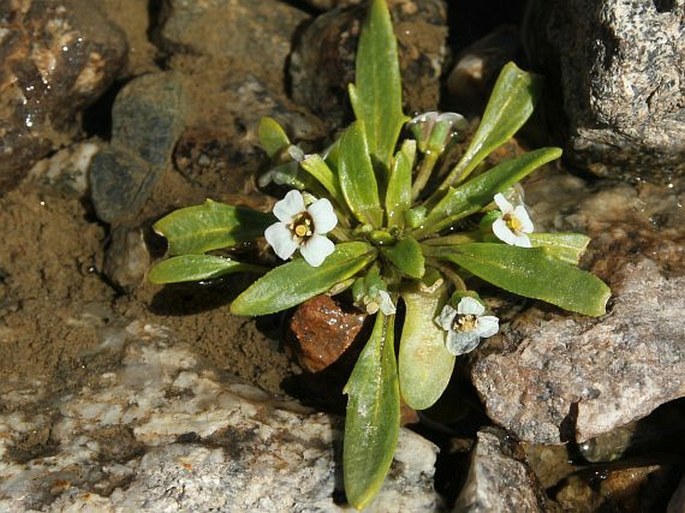Syn.: Cochlearia scapiflora Hook. f. et Thomson
Family: Brassicaceae Burnett

Distribution: From northern India and Bhutan to the Chinese provinces of Gansu, Qinghai, Sichuan, Xinjiang, and Yunnan.
Ecology: It grows in alpine tundra, meadows and moist pastures, gravelly slopes, gravel near glaciers, rock crevices, damp places, at elevations from 4000 to 5600 m. Blooms from June to July.

Description: Perennial herb with thick rootstock. Basal leaves rosulate, petiole 1–8(–13) cm, leaf blade ovate, or spatulate, oblanceolate, or narrowly linear, 1.5–8(–10) × 0.2–1.2(–2.5) cm, glabrous or adaxially sparsely pubescent with trichomes, abaxially glabrous, base cuneate, margin entire or dentate, sometimes minutely ciliate, apex obtuse or acute. Flowers solitary, borne on pedicels from axils of rosette leaves; sepals ovate or oblong, 2.5–6(–10) × 1.5–3.5(–4.5) mm, glabrous or sparsely pubescent; petals white, pink, or blue, broadly obovate, spatulate, or suborbicular, (3.5–)5–12(–15) × (1.5–)2–9(–10) mm. Fruits silicles, oblong, or orbicular, 5–13(–20) × 4–8(–10) mm.
Note: The genus Pegaeophyton contains about 6 species, which occur in mountain areas in the Himalayas and in southeastern Asia.


These images were taken in India, Ladakh, from Murabak to Lasermo La (by Jindřich Houska, July 28, 2013).


